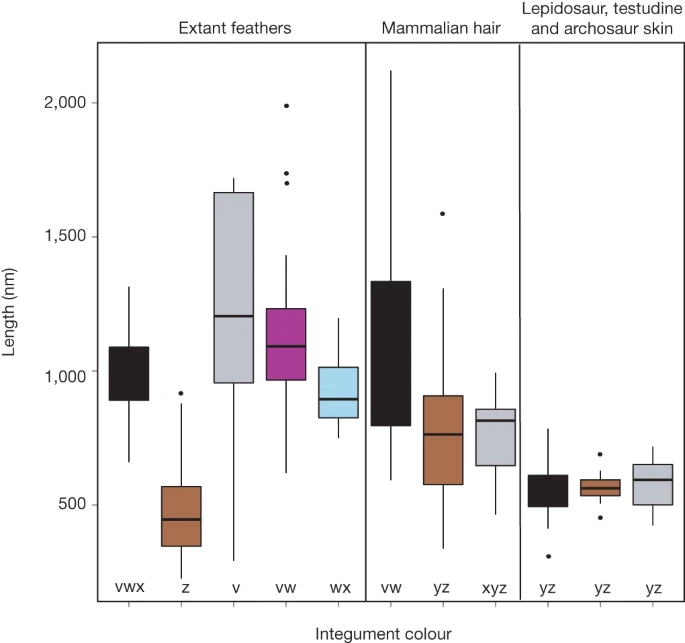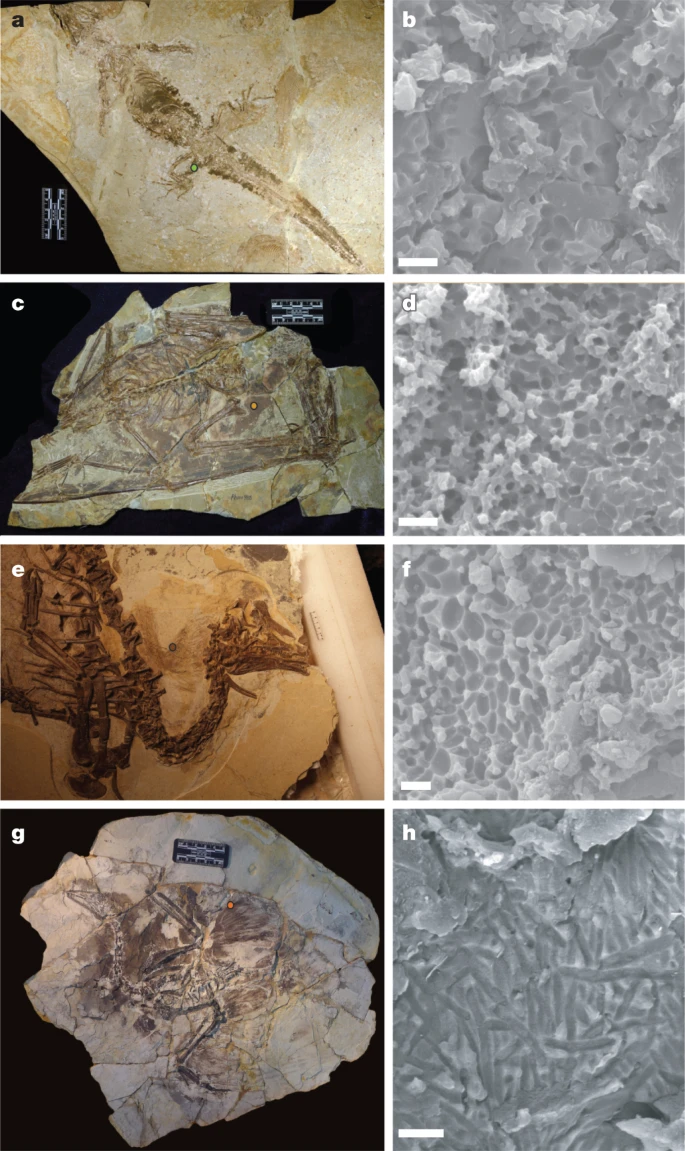Inference of colour patterning in extinct dinosaurs1,2,3 has been based on the relationship between the morphology of melanin-containing organelles (melanosomes) and colour in extant bird feathers. When this relationship evolved relative to the origin of feathers and other novel integumentary structures, such as hair and filamentous body covering in extinct archosaurs, has not been evaluated. Here we sample melanosomes from the integument of 181 extant amniote taxa and 13 lizard, turtle, dinosaur and pterosaur fossils from the Upper-Jurassic and Lower-Cretaceous of China. We find that in the lineage leading to birds, the observed increase in the diversity of melanosome morphologies appears abruptly, near the origin of pinnate feathers in maniraptoran dinosaurs. Similarly, mammals show an increased diversity of melanosome form compared to all ectothermic amniotes. In these two clades, mammals and maniraptoran dinosaurs including birds, melanosome form and colour are linked and colour reconstruction may be possible. By contrast, melanosomes in lizard, turtle and crocodilian skin, as well as the archosaurian filamentous body coverings (dinosaur ‘protofeathers’ and pterosaur ‘pycnofibres’), show a limited diversity of form that is uncorrelated with colour in extant taxa. These patterns may be explained by convergent changes in the key melanocortin system of mammals and birds, which is known to affect pleiotropically both melanin-based colouration and energetic processes such as metabolic rate in vertebrates4, and may therefore support a significant physiological shift in maniraptoran dinosaurs.

Boxplot colours correspond with integument colour: black, brown and grey. For feathers, ‘penguin-like’ is shown in blue, and iridescent is shown in purple. Lines are median values, boxes are quartiles, lines are range. Boxplots sharing the same letter (v, w, x, y, z) are not significantly different (two-sided Tukey HSD; P < 0.05) from one another; melanosome shape correlates with distinct colours in feathers and hair but not in skin. Extant feathers, n = 168; lepidosaur, testudine and archosaur skin, n = 36; mammalian hair, n = 51.

a–h, Images show the differences between low-aspect melanosomes consistently observed in lepidosaur skin (PKUP V1059; a, b) and filamentous structures in pterosaurs (BMNHC PH000988; c, d); and between non-maniraptoran dinosaurs (Beipiaosaurus; BMNHC PH000911; e, f) and the high-aspect-ratio forms observed in maniraptoran feathers (undescribed ornithurine bird, CUGB G20100053; g, h). Dots in a, c, e and g indicate the location of the samples shown in b, d, f and h. Dot colours correspond to the colours in Fig. 4: light green, extinct lepidosaurian, testudine and crocodilian skin; dark brown, filamenous body covering in dinosaurs; light brown, pterosaurs; orange, feathers in extinct stem avialan taxa. See Extended Data Figures for complete sampling maps. Scale bars, 1 μm.